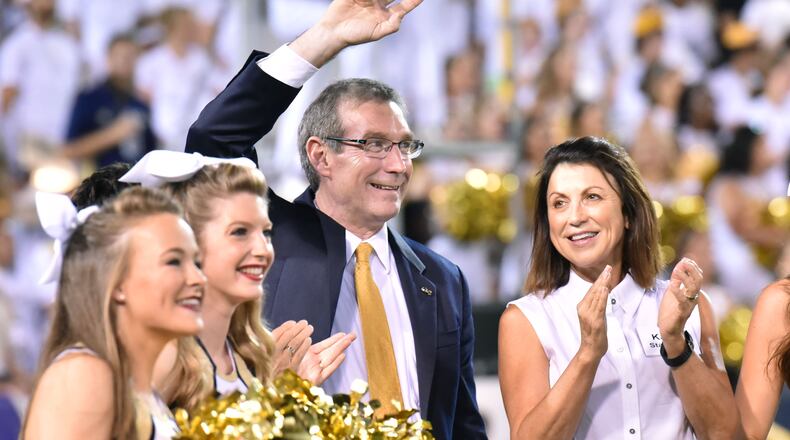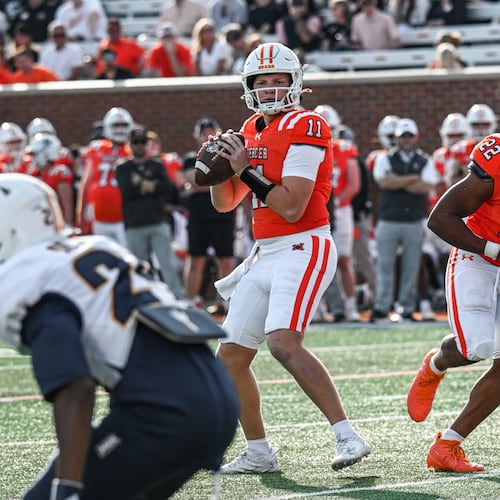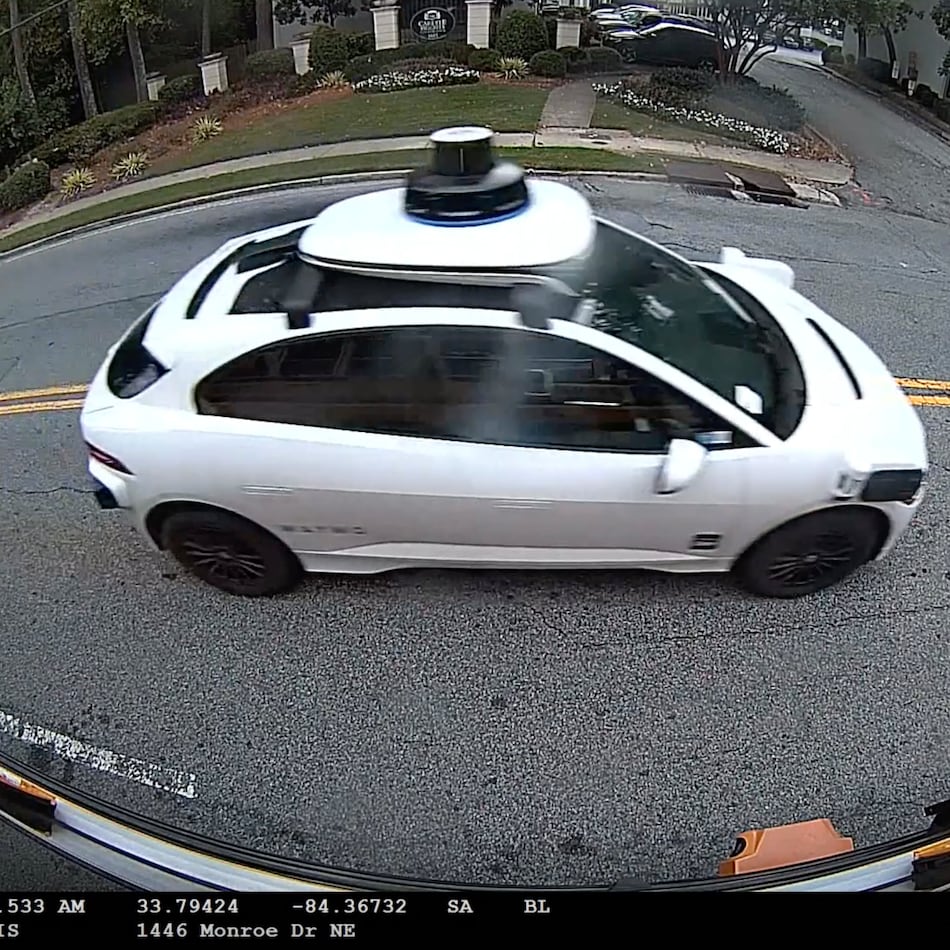When Todd Stansbury learned that Mike Bobinski had resigned from his position as Georgia Tech athletic director this past August, his reaction was something like anguish. Coming back to his alma mater to run its athletic department was a dream job, but he didn’t feel it was one he could pursue only one year into his own tenure at Oregon State.
That hurdle was cleared when Tech initiated the conversation. But there was another matter. At that point, his contract with Oregon State had bound him tightly to the school. Were he to leave the school at that point, a little more than a year into a five-year contract, he would owe Oregon State in the neighborhood of $2.2 million.
“It wasn’t a moment of panic,” Stansbury told the AJC. “I think it really came down to Georgia Tech knowing what my situation was and whether they were even interested in continuing the conversation, and so I think that was really the first step of the conversation, like, Hey, I love my alma mater, but I’ve got this issue.”
As it turned out, Tech president G.P. “Bud” Peterson was still interested in Stansbury, and he was hired as Tech’s ninth athletic director in September. The contract and buyout arrangement between the two parties, obtained through an open records request, sends a clear message that both sides are committed to the relationship.
Tech has made a heavy investment in Stansbury, in part to help him meet his onerous buyout agreement with Oregon State, and likewise Stansbury has a vested interest in not going anywhere for the length of his five-year contract. If he leaves before it’s up, he’ll owe the athletic department more than $1.1 million, due immediately.
“I think that shows that both myself and the institution were very committed to making this happen, because it was not easy,” Stansbury said.
The buyout is so heavy because Stansbury broke his five-year Oregon State contract so early. It stipulated that, if he ended it, he would owe damages to Oregon State equal to the amount of the salary still remaining in the contract, $500,000 annually. He would also have to pay back the unamortized amount of the $350,000 buyout payment that Oregon State agreed to pay to UCF when it hired him in 2015. (When he made the contract, Stansbury hoped to include a clause exempting him from a buyout if he left for Tech, but was unable.)
To help make his departure feasible, Peterson and Stansbury agreed on a covenant that demonstrated their mutual commitment. Stansbury’s contract includes a loan from the athletic association of up to $1.1 million to cover his buyout. If he leaves before his contract is up in June 2021, Stansbury will owe the entire amount, plus interest, immediately. However, if he stays through the contract, the entire loan will be forgiven.
The contract with Tech, Stansbury said, had to make sense for him to be able to take the job and handle the buyout, “as well as something that the school could feel comfortable with as well. I think that’s what you see in that number.”
To also help him handle the buyout not covered by the loan, Tech gave him a five-year contract that makes him one of the most well-compensated athletic directors in the country. His annual salary, paid by both the institute and athletic association, starts at $900,000 and increases to $951,000 in the last year of the contract, 2020-21. It’s an 80 percent raise over his Oregon State salary. A USA Today report in 2013 of athletic director salaries among FBS schools listed only 11 AD’s who earned more than $900,000.
The USA Today figures are obviously dated. Two of the AD’s who were making more than $900,000 at the time are no longer at their jobs. Still, other salary data confirms how much Peterson and the search committee wanted to bring Stansbury back to Tech to lead the department. When he left Tech, Bobinski’s salary was $700,000, including $175,000 in deferred compensation. Clemson AD Dan Radakovich, who preceded Bobinski at Tech, is reportedly making $746,500 to preside over a much larger operation.
The salary/loan combination helped Stansbury meet the roughly $2.2 million buyout, which was due within 30 days after the date of his contract termination.
Had Tech hired a candidate for Bobinski’s $700,000 without offering a forgivable $1.1 million loan, that might have resulted in savings of perhaps $2.1 million over five years. Perhaps not coincidentally, that’s roughly the amount of the buyout. It’s a cost that Peterson was evidently ready to absorb for his AD of choice, one who doesn’t appear headed anywhere soon, if ever.
“I think that’s really what it came down to, that we wanted to make it happen and it wasn’t going to be easy for either of us, and I think we were able to come up with something that we both felt comfortable with,” Stansbury said. “I think when you look at it, you know. And as I’ve told my staff a lot of times, an athletics director or a coach is thinking in three-to-five year increments, because that’s how long your contract is. But I think, based on the commitments that I’ve had to make and the institution has made to me, my plan is to be here until the end of my career.”
About the Author
Keep Reading
The Latest
Featured




